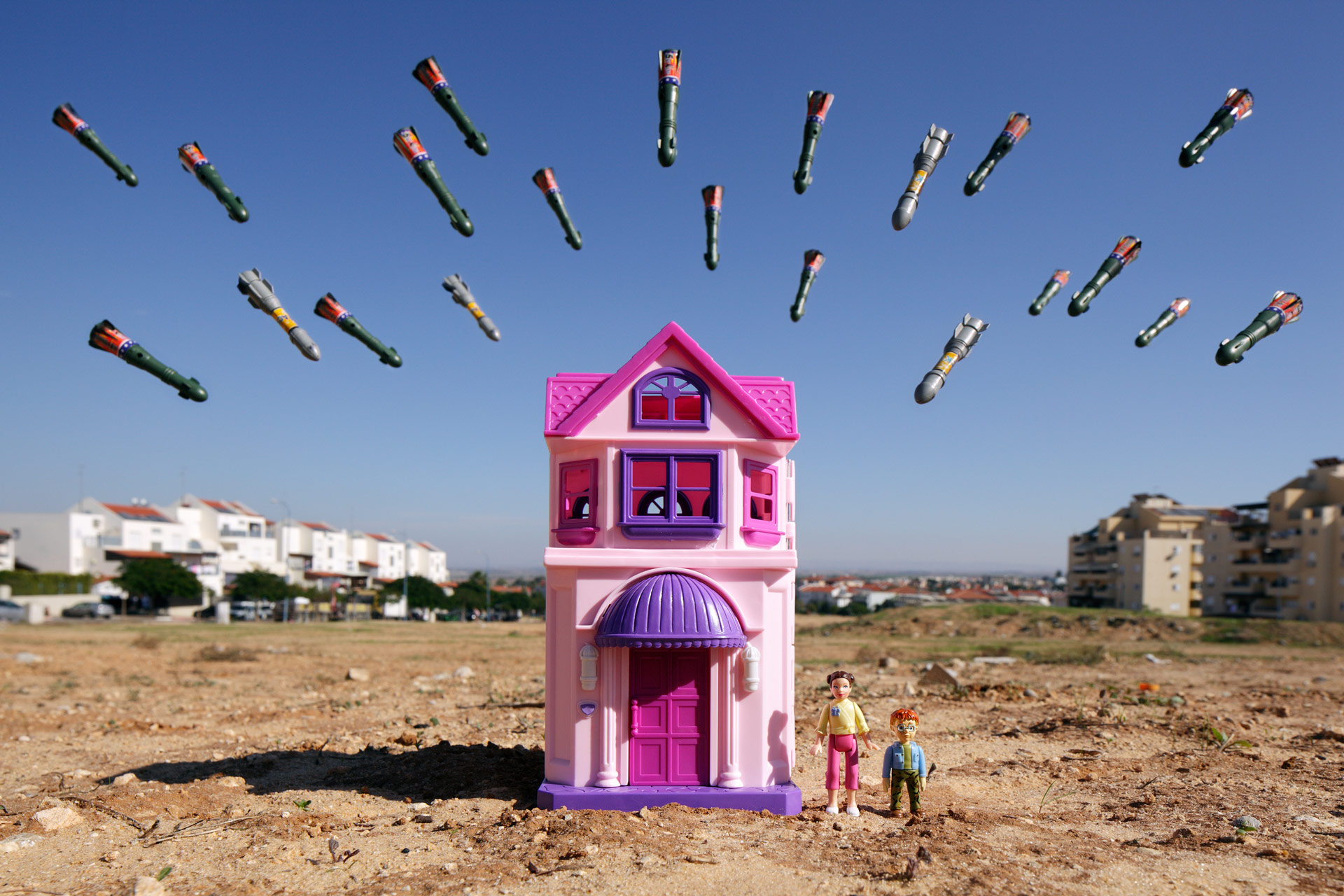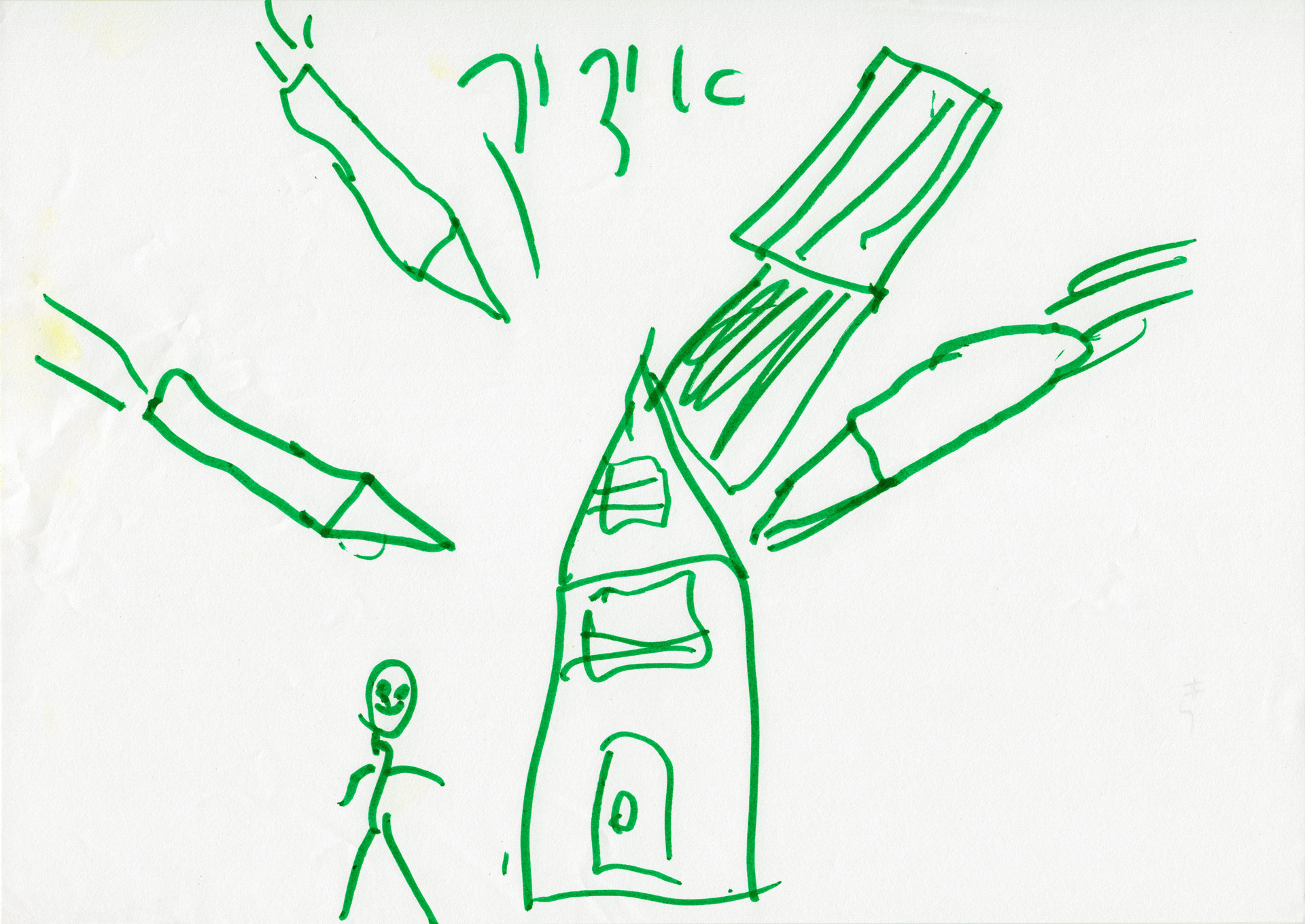‘War-Toys’ exhibition spotlights the reality of children living in armed conflict
December 13, 2017 | UHCL Staff

 The devastating psychological effects of violence on children can linger for life.
Children in Gaza, the West Bank and Israel have been living amid armed conflict for
years, and Brian McCarty, a Los Angeles-based photographer, created an exhibition
entitled, “War-Toys: Israel, West Bank and Gaza Strip” that offers a new perspective
to their trauma. The exhibition will be on view at the Art Gallery at University of
Houston-Clear Lake from Jan. 29-March 15.
The devastating psychological effects of violence on children can linger for life.
Children in Gaza, the West Bank and Israel have been living amid armed conflict for
years, and Brian McCarty, a Los Angeles-based photographer, created an exhibition
entitled, “War-Toys: Israel, West Bank and Gaza Strip” that offers a new perspective
to their trauma. The exhibition will be on view at the Art Gallery at University of
Houston-Clear Lake from Jan. 29-March 15.
“The concept of this exhibition is to allow children to essentially art-direct the
photos that I take,” McCarty said. “The idea to showcase the trauma of children living
in armed conflict is rooted in a study I did in 1996 for an exhibition in Croatia
in which I focused on war toys. But I’m an outsider to war; I have no personal experience
with it other than a desire since childhood to learn about it and talk about it.”
After the 1996 exhibition, McCarty said he spent about 15 years learning about art
therapy for traumatized children. “Although this connection to war started out as
a curiosity for me, I would say that a turning point for me occurred in 1984 when
a mass shooting took place in a McDonald’s in San Ysidro. I was in the third grade
and it affected me very deeply,” he said. “That memory factors into this exhibition—it
created a curiosity about things in a world that are scary and dark, and a wish to
explore it in a safe way.” That mass shooting resulted in the death of 21 people and
is ranked as the seventh-deadliest shooting in U.S. history.
Compelled to tell the stories of the children living in the crisis of war, McCarty
began traveling to Israel and Palestine in 2011. “The first time I went, I tried out
the concept of letting children be the ‘art directors’ of my photos,” he said. “In
the beginning, I approach the children with careful intention, with the help of a
professional art therapist. The children then make a drawing about their lives, which
I then translate into a photo.” McCarty explained that his time with these children
is not “art therapy,” but can have a therapeutic effect.
McCarty said he does his best to articulate what they’ve drawn by photographing a
locally found toy placed—ideally-- in the location the child has drawn. “The idea
is to contextualize and present the child’s reality through a playful filter,” he
said. “It’s very upsetting. Party of the beauty of this concept is that it sneaks
around people’s defenses. People get numb to this kind of trauma and they can’t handle
it.”
He added, “Deconstructing experiences in this way recreates it with a degree of separation
and therefore it’s easier to swallow. People who are hardened can break down; the
photos cut through them. To me, this means I’ve been successful.”
Two years ago, McCarty employed an image tracking service to gather data about the
use of his photos on social media. “That’s how I found out that ISIS had corrupted
one of my images and used it as a propaganda device to recruit new members,” he said.
The image depicted a Cinderella toy with missiles falling overhead, based upon a drawing
he’d received from a little girl. “I had put the toy on location in Gaza. Bombs were
dropping as I took the photo. I was attempting to articulate the little girl’s intense
fear of missiles,” he said.
ISIS photoshopped the Cinderella toy out, and in its place, put their flag and a copy
of the Quran, then surrounded it with a “magical” shield, with some kind of verbiage
stating that the Quran and the shield would protect them from the bombs. “There was
some language about ‘crusader’ bombing in Arabic, and I thought that was very telling,”
McCarty said. “We worked to get that photo removed from the internet. It as a personally
devastating experience, because at its heart, my project is anti-war, so to take this
photo and corrupt it in this manner is so wrong.” The photo in question is part of
the exhibition coming to UH-Clear Lake.
McCarty said that both sides of the political conflict in Israel and Palestine are
represented through the children’s drawings and photos in the exhibition. “The nationalistic
themes come through the children, although it’s an apolitical exhibition,” he said.
“It’s important to include their perspectives, although there’s no difference in their
trauma. Whoever is shooting at them is the bad guy. This is simply a presentation
of the children’s reality.”
For audiences visiting the exhibition, McCarty said he hopes that they will try to
imagine what it would take to be a child living in this experience. “Everyone plays
with toys. If you remove the child from the photo, try to deconstruct their reality,”
he said.
The exhibition will continually expand as McCarty visits more war-torn countries.
“This is a lifelong project and I’ll probably take a trip a year,” he said. Future
destinations include Syria, Iraq, Northern Lebanon, South Sudan and Mali.
For more information about UHCL’s Art Gallery and exhibitions, visit www.uhcl.edu/art-gallery/exhibitions/upcoming-exhibitions
About the Author:
Recent entries by
October 18 2022
Better technology transforms campus safety: Police Chief demonstrates SafeZone to students
October 14 2022
Student's skill with drones takes chicken turtle research to new heights
October 11 2022
Planting event to help UHCL restore native plants to campus, support environmental sustainability








 The devastating psychological effects of violence on children can linger for life.
Children in Gaza, the West Bank and Israel have been living amid armed conflict for
years, and Brian McCarty, a Los Angeles-based photographer, created an exhibition
entitled, “War-Toys: Israel, West Bank and Gaza Strip” that offers a new perspective
to their trauma. The exhibition will be on view at the Art Gallery at University of
Houston-Clear Lake from Jan. 29-March 15.
The devastating psychological effects of violence on children can linger for life.
Children in Gaza, the West Bank and Israel have been living amid armed conflict for
years, and Brian McCarty, a Los Angeles-based photographer, created an exhibition
entitled, “War-Toys: Israel, West Bank and Gaza Strip” that offers a new perspective
to their trauma. The exhibition will be on view at the Art Gallery at University of
Houston-Clear Lake from Jan. 29-March 15.